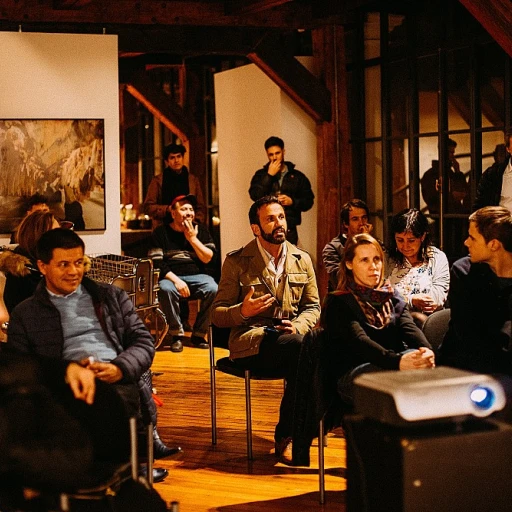
Understanding User Needs
Identifying User Expectations for Recruitment Sites
Building an effective recruitment website begins with a deep understanding of what users need and expect from their experience. Whether you're designing for a recruitment agency or staffing firm, acknowledging user needs will set a solid foundation for further design stages.- Candidate Centricity: Candidates searching for job opportunities expect a user-friendly layout that streamlines the application process. Ensuring that job listings are easy to access and filter can enhance user engagement and retention.
- Employer Expectations: Clients, which include businesses looking to hire talent, need a site that clearly outlines the agency's capabilities and success stories. This not only supports recruitment marketing efforts but also builds trust.
- Mobile Compatibility: With the prevalence of mobile use, it's essential to design for responsiveness. Websites must adapt seamlessly to various devices to prevent any stroke width issues that might hinder the user experience.
- Visual Hierarchies: Implementing button templates and visual elements in your web design can guide users effectively. By structuring the website appropriately, you eliminate confusion while highlighting key areas like job board features or fast recruitment sections.
- Performance and Speed: Users expect a fast-loading site. Utilizing optimization techniques like improving CLS and optimizing fill stroke can enhance the overall experience and keep users engaged.
Essential Features for Recruitment Websites
The Cornerstone Elements of a Recruitment Platform
Navigating the realm of online recruitment with an effective website design requires putting together essential features that serve the needs of both candidates and employers. These features not only make the recruitment process seamless but also elevate user experience and engagement.- Job Listings and Search Function: A recruitment website's primary function is to showcase job openings. This involves designing a job board that is intuitive and easy to navigate. Implementing a robust search function helps candidates swiftly find jobs tailored to their skills and preferences.
- User-Friendly Application Process: To attract top talent, it's paramount to have an application process that is simple and streamlined. Candidates should be able to swiftly upload and submit their résumés with clearly marked steps from start to finish.
- Responsive Design: With the increasing use of mobile devices, your recruitment site should have a responsive web design. Ensure it’s adaptable to various screen sizes to provide a consistent user experience across desktops, tablets, and smartphones.
- Integration with Social Media: Integrating social media platforms boosts recruitment marketing efforts and allows candidates to share job postings with their networks. Furthermore, potential job seekers can follow the company for updates and insights into company culture.
- Clear Call-to-Action (CTA) Buttons: Strategically placed CTA buttons, such as 'Apply Now' or 'Book Demo', guide users efficiently. Ensuring these buttons are prominent and have a clear purpose encourages interaction.
- Employer Branding Sections: Showcase what sets your recruitment agency apart by highlighting company values, culture, and success stories. This not only attracts candidates but also helps in building trust with potential clients.
- Information and Support Accessibility: Providing easy access to FAQs and support contact information can significantly enhance user satisfaction. Clear avenues for assistance mean candidates and employers feel supported throughout the hiring process.
Designing for User Experience
Enhancing the Interface for Effortless Navigation
To effectively capture the best talent, recruitment website design must prioritize user experience. A recruitment site is not merely an online job board; it's a dynamic platform that must balance form and function, supporting both candidates and clients. By focusing on the interface, you can ensure that users can easily navigate through the website, finding the information and opportunities they need.
Start by implementing a clean, intuitive layout. Eliminate unnecessary clutter and focus on a streamlined design that guides users effortlessly from one section to another. A recruitment agency website should use a consistent template throughout, ensuring that the navigation is straightforward.
The design examples set by cutting-edge agency websites emphasize simplicity and functionality. Use large, clearly labeled buttons to direct users to critical areas such as job listings, contact forms, and support resources. Strategic use of color and typography can make these elements stand out without disrupting the visual harmony.
Responsive Design for Multi-Device Compatibility
With the rise in mobile device usage, responsiveness is no longer optional. A best practice in web design is ensuring your website is optimized for all devices, including desktops, tablets, and smartphones. This adaptation by recruitment websites can significantly enhance user experience, making it easy for talent to explore opportunities from anywhere at any time. Implement fluid grids, flexible images, and media queries to create a seamless transition from one device to another.
Minimizing Common User Frustrations
One of the critical challenges in recruitment website design is addressing common frustrations such as slow load times and awkward navigation. These issues can detract from the user experience, causing potential candidates to leave your site prematurely. By optimizing images, leveraging efficient cls fill and fill stroke widths, and minimizing stroke widths, websites can load faster, reducing the risk of losing candidates due to impatience.
Additionally, to ensure your site provides the information users seek, integrate clear, accessible paths to essential sections. Ensure your recruitment marketing strategies align with the site's content, providing comprehensive insights without overwhelming users.
Enhancing the user experience isn't just about crafting a visually appealing website; it's about facilitating a straightforward, engaging journey for every visitor, whether they're seeking jobs or looking to partner with a recruitment staffing agency. By prioritizing these design elements, your website can become an invaluable resource in attracting top candidates and satisfying client needs.
Incorporating Employer Branding
Highlighting Your Unique Employer Identity
Creating a recruitment website that fully embodies your brand's unique identity is essential in today’s competitive job landscape. Your website is often the first touchpoint potential candidates have with your organization, and it should convey not just job opportunities, but also your company's culture and values. To effectively communicate your employer branding, here are some vital considerations:- Visual Identity: Use consistent color schemes, logo placements, and fonts across your site. This harmony in web design ensures candidates recognize your brand instantly.
- Authentic Content: Share stories and experiences from current employees. Whether through video testimonials or written success stories, these can significantly reinforce your brand’s authenticity and appeal.
- Social Media Integration: Leverage social media to highlight your culture. Feature recent company events, team achievements, and day-in-the-life articles. This visibility supports candidates in visualizing their potential work environment.
- Employer Value Proposition (EVP): Clearly articulate your EVP on your website. Highlight benefits, growth opportunities, and unique company attributes that make your agency or organization a desirable place to work.
Optimizing for SEO and Accessibility
Boosting Visibility with the Right Strategies
Optimizing a recruitment website for SEO and accessibility is crucial to attracting both clients and candidates. With a well-thought-out strategy, recruitment agencies can ensure that their site ranks higher in search engine results, thus increasing visibility and engagement.- Keyword Integration: Incorporate relevant keywords such as "recruitment design examples," "job board," and "staffing" throughout the website content. Implement appropriate keyword placement in headings, subheadings, and body text to enhance search engine visibility.
- Responsive Web Design: Ensure that the website is mobile-friendly, adapting seamlessly to different devices. A responsive design supports user experience by keeping the site navigable and aesthetically pleasing across platforms.
- Accessible Content: Focus on compliance with accessibility standards, such as proper use of ALT tags for images and maintaining a clear navigation structure. Accessible content ensures that all users, including those with disabilities, can easily access the information they need.
- Speed Optimization: Optimize images, code, and server response times to reduce page loading times. A fast recruitment site enhances user satisfaction and plays a critical role in reducing bounce rates.
- Technical SEO: Implement structural elements like properly configured sitemap and robots.txt files. Pay attention to meta tags and schema markup that give search engines context about the job opportunities and agency services offered.












